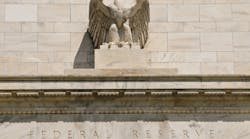The U.S. Federal Reserve voted Wednesday to hold interest rates at a 22-year high for a second straight meeting, as it moves to slow stubborn inflation without damaging the strong economy.
The Fed's decision to keep its benchmark lending rate between 5.25% and 5.5% gives policymakers time to "assess additional information and its implications for monetary policy," the central bank said in a statement.
"The process of getting inflation sustainably down to 2% has a long way to go," Fed Chair Jerome Powell said at a news conference Wednesday, referring to the Fed's long-term target for interest rates.
He added that the Fed, "is not thinking about rate cuts right now, at all."
The Fed's widely expected decision to hold rates steady marks the first time officials have done so at two consecutive meetings since they began tightening monetary policy last year.
- Job gains 'remain strong' -
Since peaking at more than 7% in June 2022, inflation as measured by the Fed's favored yardstick has slowed by more than half -- although it remains stuck firmly above 3%.
Many analysts, including those employed by the Fed, were predicting the United States would enter a recession this year due to the rapid pace of interest rate hikes.
When the Fed hikes interest rates it raises the cost of borrowing from the bank, which normally dampens economic activity and weakens the labor market.
But despite its aggressive monetary tightening, the Fed noted that "economic activity expanded at a strong pace in the third quarter."
"Job gains have slowed in recent months but remain strong, and the unemployment rate has remained low," it added.
The Fed's decision to pause will likely fuel expectations that it is done hiking interest rates and is moving instead to a prolonged pause.
"This is a Fed that wants to be done hiking rates," economists at Citi wrote in an investor note after the decision was announced.
"In our base case, the Fed will stay on hold and inflation will continue to run above target until a recession loosens the labor market and brings down inflation," they added.
But Pantheon Macroeconomics Chief Economist Ian Shepherdson took a different view, noting that, "No decision on December has yet been taken," and that the upcoming employment and inflation data will be key.
- Surging yields -
Despite the strong economic data, the Fed's rate decision has been made easier by a surge in yields on longer-term government bonds.
Whereas the Fed's key short-term rate mainly affects the borrowing rates offered by banks, Treasury yields determine "everything from mortgage rates to corporate and municipal bond yields," KPMG Chief Economist Diane Swonk wrote in a recent note to clients.
The Fed is "attentive to the increase in longer-term yields, which have contributed to a tightening of broader financial conditions since the summer," Powell said Wednesday.
EY Chief Economist Gregory Daco noted that the Fed's reference to tighter financial conditions in its interest rate announcement was "a nod to the fact that financial markets are doing some of the Fed's tightening effort."
- Limited Mideast economic impact -
In his press conference, Powell also addressed the recent breakout of conflict between Israel and Hamas militants in Gaza, which is now into its fourth week.
"Global geopolitical tensions are certainly elevated. And that goes for the war in Ukraine, it goes through the war between Israel and Hamas," he said.
"The price of oil has really not reacted very much so far," he continued, adding that it wasn't clear at this point if the conflict is "on track to have significant economic effects."
Copyright 2023, Agence France-Presse




